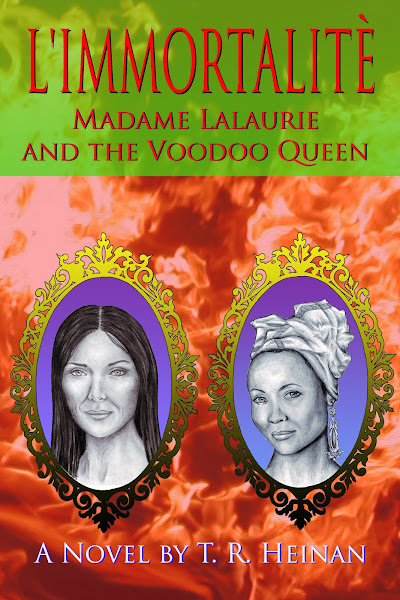QUESTIONS FOR THE AUTHOR
Recently some fans have sent in a few questions.
MF in Florida wants
to know, "Did Marie Laveau and Delphine Lalaurie actually know each other?
One of the things that led me to write this story is that it
deals with a time when the two most influential people in New Orleans were both
women. Because of their social influence
and the fact that they lived within walking distance of each other, there can
be little doubt that each was well aware of the other. On the other hand, at that time it would have been most
unlikely that a woman of Delphine Lalaurie's social standing in the French
Creole community would associate with a free woman of color such as Marie
Laveau. Still, the fictional connections
in my book are not entirely impossible.
The fun part of historical fiction is the "what if "factor and my goal is to entertain.
TB in Arizona asks:
Most accounts I have read say that Delphine Lalaurie was killed by a
wild boar in France. Is that what
happens in your book?
The jury is still out as to the date, place and manner of
Madame Lalaurie's death, but there is some evidence to indicate that she may
have returned to New Orleans and died in her bed. I won't reveal what happens to her in my
book, but telling fans of this legend that she just died in her bed is, to me,
a bit like standing in Macy's at Christmas time and telling kids there is no
Santa Claus.
RJ in Louisiana said:
I had a chance to read an advance copy and on the second read, I
discovered that your story appears to be written on multiple levels. Am I right?
Well, that is at least is what I tried to accomplish. On the surface, it is a new spin on an old
horror legend. It is also a meditation
on the question of life after death as witnessed by a man whose mother's rosary
beads serve as an uncut umbilical cord that prevents him from maturing
spiritually. I have a personal hang-up
about how some writers tend to overuse the word "turn" and so there
are only two "turns "in my book. One is when my protagonist "turns"
into Pirates Alley at the beginning of the story and the other when he
"turns" out of it as he reaches the final plot point. Pirates Alley becomes his "yellow brick
road" as he moves through the various "monomyth" steps of his
hero's journey. A clue to this is that he
lives in a yellow brick house (which in the real world is located about where
the yellow brick building that once was home to William Faulkner now stands). Since my protagonist is a bookworm, I think
he would have liked that touch. The occasions when he offers bread, and later
wine, to a runaway slave also have symbolic significance in the story.
Those are some great questions!
ReplyDelete